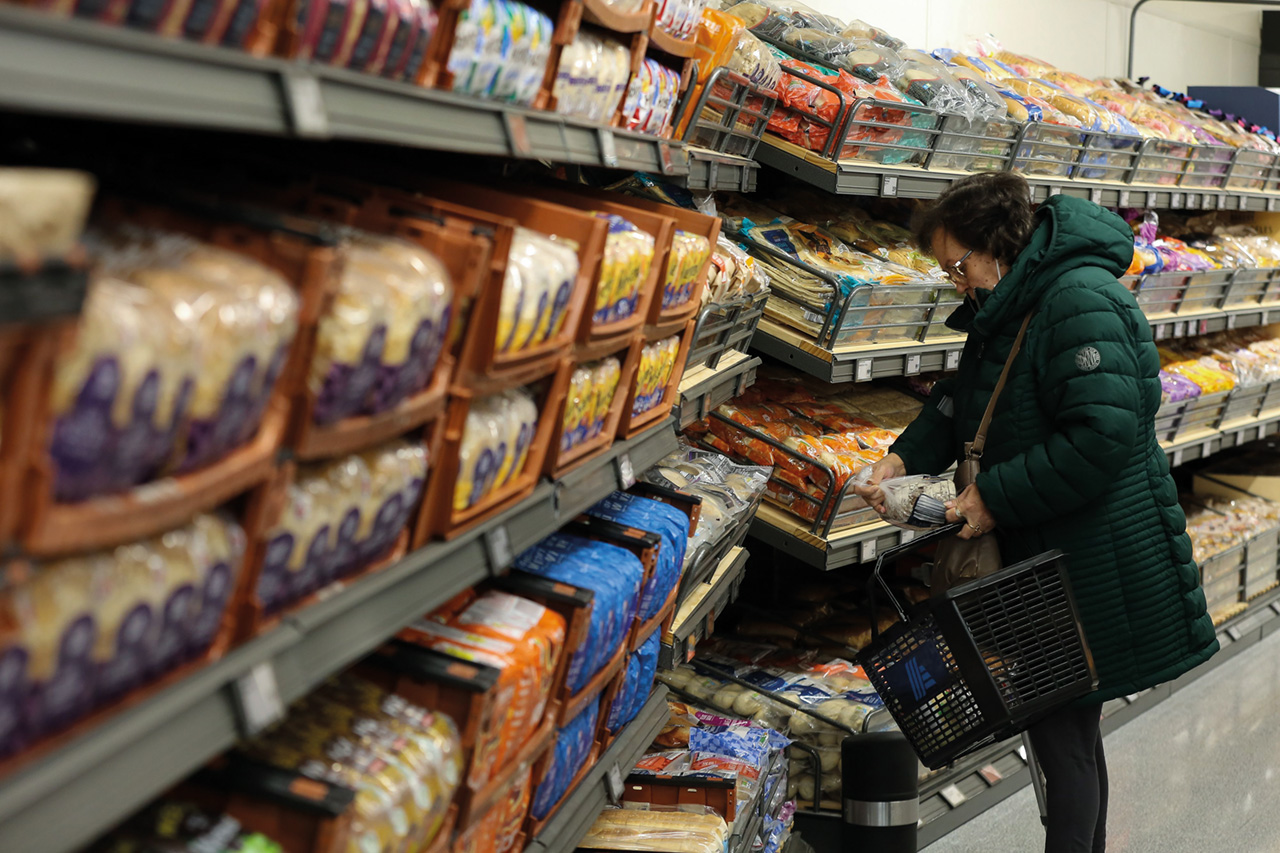Inflation is a measure of how prices rise, and if you’ve listened to the news lately you’ll have heard they’ve been rising faster than usual. At 5.4 per cent, it’s the highest annual increase the UK has seen in decades and it means that a shopping bill that cost £100 last year now costs roughly £5.40 more for the same exact goods. However, these figures are based on averages across the entire economy and focusing on just one number can mask how poorer people are experiencing the rising cost of living.
“Higher prices put further strain on those suffering from stagnant wages and a decade of austerity cuts.”
To understand this, it’s important to explain how inflation is calculated. The Office for National Statistics (ONS) collects price data on over 700 goods and services from different shops and brands, regularly updating these goods to reflect the average consumer according to our changing tastes. They then calculate average price increases for all products and these are aggregated together, with goods that take up a higher percentage of people’s spending weighted more.
As recently pointed out by writer and activist Jack Monroe, a problem with these figures is people don’t tend to buy everything at the average price. Instead, people buy a mixture of high-priced, mid-priced and the cheapest goods available, with poorer people often having to rely on the cheapest versions of most items. This becomes a problem when, as seems to be the case, the cheapest goods go through the highest price increases.
In their Twitter thread, Monroe documents the massive price increases occurring across many staple food items for discount brands – seeing 30-300 per cent increases, miles away from the headline 5 per cent figure. Plus, some discount brands get discontinued, often meaning a large price increase to the next-cheapest brand. While the ONS includes these in its calculation, it only makes a small difference to the overall figure – even if they make up the majority of poorer people’s experience.
In addition, the ONS doesn’t record the prices of end-of-day discounted items or consider quantity offers, such as buy-one-get-one-free, although it does include price discounts that last all day. These omissions can be quite significant: for example, removing a buy-one-get-one-free deal means the price of that product goes up by 100 per cent. These higher prices put even further strain on Britain’s poorest, who are already suffering from stagnant wages and over a decade of austerity cutting public services and benefits.
So there are multiple reasons why inflation is often much higher for poorer people than headline figures suggest. However, even if inflation was the same across all goods, poorer people would still be worst off. Firstly, if everyone’s 2022 shopping bill cost £5.40 more for every £100 they spent last year, this would hit poorer people hardest, as that £5.40 would be worth a higher percentage of their income.
In the face of increased costs, a richer person may choose to substitute to a cheaper brand or give up some non-essential items – perhaps even choosing to spend less because of higher prices. Poorer people don’t have this choice if they’re already spending the majority, if not all, of their money on essentials and buying the cheapest options. Unfortunately, many families are forced to give up essentials, with 2.4 million living in some form of destitution even before the pandemic.
The New Economics Foundation’s (NEF) latest research highlights this. It found that the poorest families will see a 7.5 times larger rise in energy bills as a portion of their income than the richest come April, mainly due to their lower incomes. Higher price increases on other essential items, such as food, will make this problem worse.
In response to these issues, Monroe called for the creation of a new price index – one that captures how the poorest experience inflation. This would help everyone understand the cost of living pressures for the poorest and, if figures are as striking as they seem, pressurise the government to take action or provide support. Back in 2014 at NEF we created the Real Britain Index, an attempt to provide an alternative measure to calculate inflation for low-income people. This week, the ONS thankfully responded to Monroe’s call, and announced it will improve its tracking of inflation experiences for different kinds of households.
At NEF, we are campaigning for a living income that would mean everyone has enough money to meet the needs for a decent quality of life. Understanding the cost pressures facing the poorest is an important part of this, and a new inflation measure that centres on low-income experiences would be a useful step in the right direction.
Dominic Caddick is a researcher at the New Economics Foundation (neweconomics.org)
Photo: Shopping has gone up by 5.4 per cent in 12 months, the highest increase in decades (Shutterstock)


